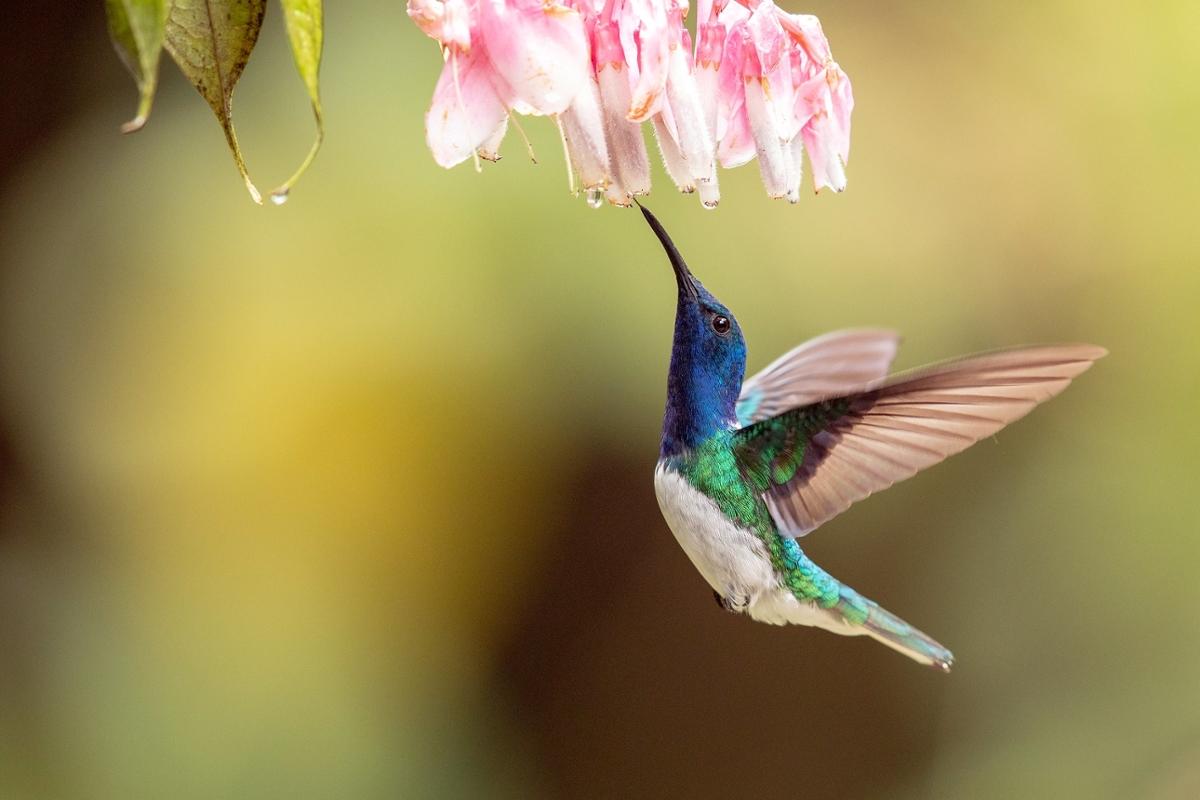Part of the fun of getting dressed up is getting compliments. It’s nice when someone notices our pretty dress or spiffy suit. But everyone knows there’s a kind of attention that isn’t welcome. Female hummingbirds have to contend with unwanted attention too, but interestingly, the ones with bright, showy colors experience it less.
With their flashy deep blue and white feathers, male White-necked Jacobin hummingbirds look like they’re always dressed for a party. When female White-necked Jacobin hummingbirds are juveniles, they have the same flashy plumage, but by the time they’re adults, most lose their blue and white colors and turn subtler shades of green and gray. Twenty percent of females, however, never lose their male-like colors. While scientists don’t know why some females keep the bright colors and others lose them—whether it’s caused by genetics, choice, or environmental factors—they looked for clues by studying how the different plumages affected female hummingbirds.
To do that, they set up stuffed female hummingbirds with showy colors and with drab colors on feeders and observed how live hummingbirds interacted with them. They found that both male and female hummingbirds harassed the drably colored hummingbirds much more than the brightly colored ones. After several months of observing hummingbirds feeding, they also noted that the females with male-like colors were able to feed more often and longer than the subtly colored females.
There does seem to be a trade-off: the scientists found that male-like plumage decreased a female hummingbird’s reproductive success. But with all the bad behavior happening around feeders, perhaps it’s a trade-off some of us can understand.









